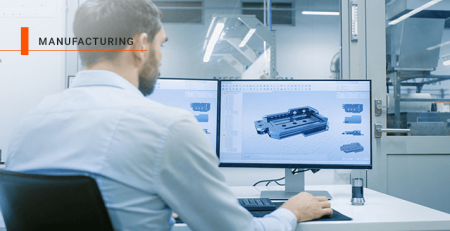Technology in Support of Workplace Mental Health
Understanding the Significance of Mental Health in the Workplace
Mental health significantly impacts the workplace. Sadly, more than two out of five employees suffer from one or more mental concerns ranging from anxiety and stress to clinical depression. These mental concerns can manifest in the workplace as a lack of motivation, decreased focus, reticence to engage in teamwork activities, and absenteeism. According to Deloitte’s Mental Health in the Workplace report, more than half of workers experience debilitating and persistent mental health concerns, especially anxiety and depression.
How Employee Mental Health Affects the Bottom Line
Mental health concerns are a top concern for businesses, for they significantly affect the well-being of their employees, impact productivity, and affect a company’s bottom line. According to a study by Willis Towers Watson, “The vast majority of U.S. employers (94%) say managing healthcare benefit costs will be their top priority over the next two years, followed by enhancing mental health benefits (87%).”
Spending more upfront on mental health for employees to prevent mental conditions from occurring rather than treating mental conditions after they have occurred will help employees from becoming conflicted with struggles that would otherwise affect their capacity to work efficiently and effectively. This sounds like a win-win for employers and employees alike, but how business leaders go about making mental health a priority in the workplace is not as simple as it sounds – and thus many are leaning on key technologies to help.
Key Technologies to Support Employee Mental Health
There are several key technologies that employers can implement in the workplace as part of a robust mental health wellness program:
- Wearables: The way wearables work is simple – an employee wears a smartwatch, Fitbit, or some other gauging device that can be worn or held (think smartphone). The employee uses their wearable to report their mood or record their voice to gauge their mental state. The wearable can also gather pertinent health information such as heart rate, temperature, and electrodermal activity to gauge the user’s well-being. George Eleftheriou, CEO of Sentio Solutions, a company that develops biomarkers and digital therapeutics for mental health, states that “By 2025, measures of mental health can be taken as easily as glucose levels today.”
- VR: VR and augmented reality (AR) are proving to be useful in resolving employee mental health concerns such as anxiety, depression, and even phobia, largely through easily-accessible mindfulness and relaxation exercises. This valuable mental health support tool can help employees prioritize their mental health and seek support when they have a mental health concern.
- Apps: Mental health apps can benefit not just the employee but the entire team and company due to the ease of communication they afford. Mental health apps often have capability to contact the company’s HR Department if requested. Through these apps, employers can readily identify the source of their employees’ biggest mental health issues and can tailor programs to address those issues directly.
- AI: Sometimes an employee just needs to talk with someone about daily stressors but doesn’t know who to reach out to. Enter AI chatbots. AI chatbots can help employees manage routine and day-to-day stress. According to Lucy Roberts, a senior consultant for the national engagement and well-being practice at OneDigital, an advisory firm focused on health, wealth, and retirement, chatbots can be utilized as “a bridge to connect individuals with employer-sponsored therapy sessions or help match people with clinicians or therapists that are a good fit to their needs.”
Take the First Steps Towards a Healthier Workplace
Tech tools have tremendous potential in creating a viable mental health program in the workplace. However, before implementing them in the construction of a health policy, it is important to define the objectives of the tool in light of the broader organizational strategy and goals. In simpler terms, it is important to involve business leaders and employees alike in the construction of a mental health wellness program to ensure that all parties are engaged and aligned.
Employers can create and maintain an environment that is tuned into employees’ mental health needs by creating focus groups and workshops and by encouraging communication between employers and employees. In addition, employers can create a mental health “dream team” by gathering a group of people in the workplace who are dedicated to creating and maintaining a mentally healthy workplace. This ongoing communication includes regular check-ins and adjustments for continual improvement within the wellness program.
Bottom line? Implementing technology frameworks within the workplace will help support a mentally healthy environment in which employees feel heard, appreciated, and are thus able to do their jobs more effectively, leading to fewer missed days, increased productivity, and a healthier bottom line for employers.
Content created and provided by ONEAFFINITI.












